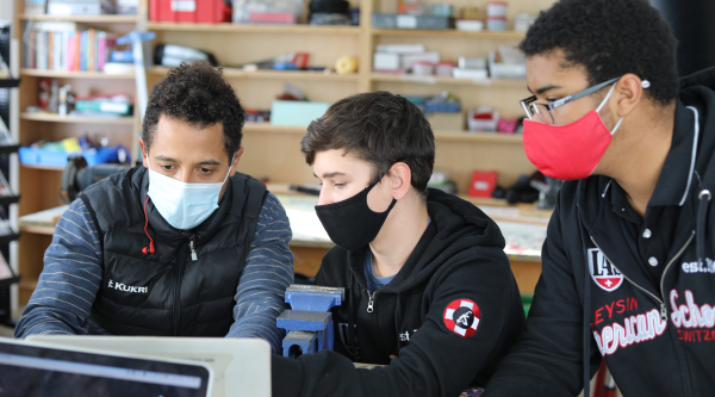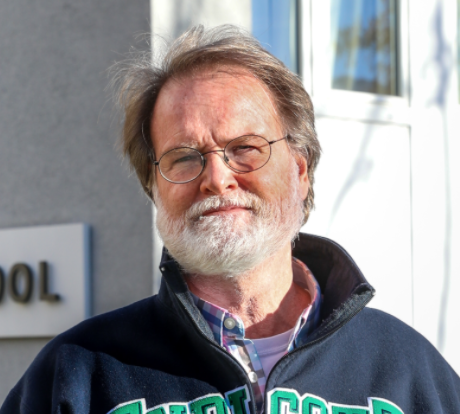Creating Space for Children to Practice Lifelong Learning
Topics

We’ve all had the experience of truly purposeful, authentic learning and know how valuable it is. Educators are taking the best of what we know about learning, student support, effective instruction, and interpersonal skill-building to completely reimagine schools so that students experience that kind of purposeful learning all day, every day.
Productive learning time in the classroom may need to include students slacking off so they can learn to better manage their time and move to more productive work.
We get better at things by practicing. This is common knowledge. We see it around us everywhere. We learn to play the piano by playing the piano. We get better at tennis by playing tennis.
It’s just as true for soft skills. We get better at working as a team by working together as a team. We get better at compromising by being put into situations that require a compromise. It’s almost trivial to mention it.
Almost trivial for this reason: with our common conception of school, we may be working so hard to deliver subject area content that we have overlooked the need to practice some pretty fundamental—and rather universally accepted—outcomes of all the schooling we deliver.
I’m thinking specifically of the goal to create lifelong learners. Since we cannot teach students everything, so the reasoning goes, we have to teach them to be good learners. We teachers are generally in agreement about the set of attributes that make a good learner. Things like perseverance, managing one’s time, being able to self-motivate when the going gets rough, and knowing how to get unstuck when the going quits going entirely.
To provide real practice becoming lifelong learners, we have to find the time and space in the curriculum to let students practice being lifelong learners. For those of us in the Leysin American School (LAS) edge Program, that means suppressing the natural inclination of the teacher to fill each instructional minute in favor of letting students find their own way.
The result, not surprisingly, includes a number of students who don’t know what to do with the freedom given to them. In effect, we teachers are saying, “Go learn!” and some students are responding, “Learn what? How do I go about learning?” These are the students who need practice managing their own learning. Without practice, how do we expect them to be lifelong learners?
If you are still on the fence, thinking that our traditional approach to teaching and learning ought to do well enough to teach students how to manage their own learning, consider these two scenarios.
- A group of six-year olds, anywhere in the world, decide to play school. What happens next?
- A group of high school students enters a classroom. The bell rings and the teacher has yet to arrive. What happens next?
Have you pictured the two scenarios in your mind’s eye? If you are anything like teachers I have spoken to in workshops and school visits around the world, your answers are:
- One child stands up and tells the other children to be quiet.
- The students sit down and … wait for the teacher.
These are not the hallmarks of an education teaching young people to become lifelong learners, at least not in the sense of managing their own learning.
Our answer in LAS edge is to give students significant freedom to find their own way. We do not require that they sit and listen as a group nor that they wait at the beginning of class for us to tell them how to get started. Rather, we expect them to be working productively without us. It is nice that we are there, with some expertise, to help them along the way. But we don’t want the students to depend on us. After all, lifelong learning is our goal.
This turns out to be a big switch. Some students do jump right in. But many students struggle to believe that we aren’t going to provide direct instruction. “But you are the teacher!” we’ve heard more than once. “Teach me.” There are also a handful of students who take the freedom we are giving them and proceed to spend lots of time on screens, talking to others, and wandering around the room.
We call this aimless student activity “slack.” We think it may actually be a necessary part of the curriculum if we are serious about teaching lifelong learning. And yes, we mean a part of the curriculum.
Remember, we get better at what we practice. Students who haven’t practiced managing their own learning do not know how to do it. The time they spend mismanaging their time—slack—is therefore not wasted. It’s their baseline for lifelong learning. Their starting point. It’s actually necessary so that students can practice moving from slack to more productive work. In this sense, slack isn’t even off task. It is the task required to begin practicing the skills of a lifelong learner.
Perhaps this is controversial. But I do not think it should be. I’ve watched students who struggled to discover their ability to manage their own learning move from a state of confusion to self-regulation often enough to know that slack needs to be part of our curriculum plan. We lose a bit of content coverage, this is true, at least initially and maybe forever. But we gain students who know themselves better and are more likely to be able to figure out how to learn content when they need it.
And those are our lifelong learners.
For more on the notion of slack in the curriculum, see Slack. Slack is one of the practices of EDgility, a formulation for progressive education inspired by the agile mindset.
Photo at top, courtesy of Leysin American School: Students (right) in a coding class of the LAS edge Program are sharing their work with a member of the school's IT office, sitting at the makerspace work table.




